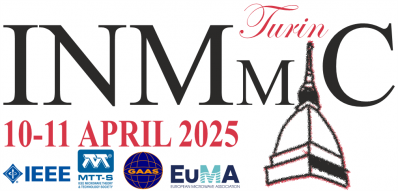The Best Student Paper Award distinguishes the most outstanding student work presented at the conference. From all the submitted student papers, considering the reviewer’s grades and comments, eight papers were selected as finalists. The current selection has been based on the paper alone. A committee will then evaluate the oral presentation during the conference and decide the Best Student Paper.
All finalist students will have his/her registration and accommodation paid by the European Microwave Association (EuMA). The Best Student Paper Award will be supported by the GAAS Association with a money prize and with the GAAS Silver Plaque. The award will be given during the closing session of the conference.
The finalist papers are:
- Wang Liu (Hunan University, China & Instituto de Telecomunicações, Portugal)
- “Optimization Methodology for Wideband SLMBA Design Considering Balanced Amplifiers’ off-State Impedance”
- Reyes Lucero (University of Colorado, USA)
- “A Ku-Band GaN PA with GaAs Gate Modulator for Improved Linearity”
- Giulia Bartolotti (Politecnico di Torino, Italy)
- “Impact on Linearity of Wideband Design Strategies for Integrated GaN Doherty Power Amplifiers”
- Amirmohammad Shahghasi (Universitat Politècnica de Catalunya-Barcelona Tech (UPC), Spain)
- “Digital Self-Interference Cancellation for in-Band Full-Duplex Communications”
- Simone Cangini (University of Bologna, Italy)
- “A Behavioral Approach to Equivalent-Circuit Modeling of GaN MMIC Varactor Cells”
- Negar Choupan (University of Milano- Bicocca, Italy & Tarbiat Modares University, Iran)
- “Characterization Procedure for Effective Evaluation of III-V Compound Semiconductor Technology”
- Jean-Baptiste Urvoy (Cardiff University, United Kingdom (Great Britain))
- “Design and Simulation of a Doherty-Mode OLMBA for Enhanced Back-off Efficiency over an Octave Bandwidth”
- Ali H Alsarraf (KU Leuven, Belgium)
- “Assessment of Dynamic Deviation Reduction-Based Volterra Modeling and Digital Predistortion of RF Passive Doubler”
